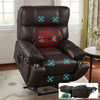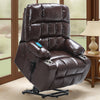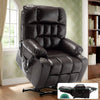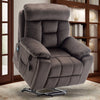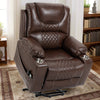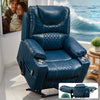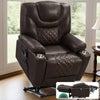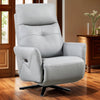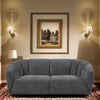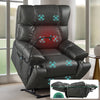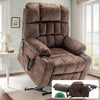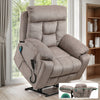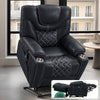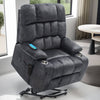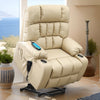Understanding the Needs of Elderly Patients
The Importance of Ergonomic Furniture in Elderly Care
Ergonomic furniture plays a crucial role in elderly care. It helps prevent discomfort and injuries. Good seating can improve posture and reduce pain. Proper support is essential for seniors with limited mobility.

Ergonomic chairs can make daily activities easier. They provide better stability and balance. This reduces the risk of falls. Comfortable seating also encourages seniors to stay active. It helps them maintain independence.
Ergonomic furniture can adapt to individual needs. It supports various body types and conditions. This personalized approach enhances overall well-being. It can lead to better quality of life for elderly patients.
Assessing Mobility and Comfort Requirements
Assessing mobility is key to choosing the right seating. Each senior has unique needs based on their physical condition. Some may require extra support for standing up. Others might need adjustable features for comfort.
Comfort is equally important in seating choices. Soft cushions can relieve pressure points. Breathable fabrics help regulate body temperature. Adjustable headrests and armrests add to overall comfort.
Consider the senior's daily routines when assessing needs. Do they need help getting in and out of chairs? Are they prone to fidgeting or restlessness? These factors guide seating decisions.
Top Seating Options for the Elderly
Modular Sectionals: Combining Comfort and Adaptability
Modular sectionals offer versatility for elderly care. They can be arranged in various ways to suit different needs. This flexibility is ideal for changing mobility requirements.

These sectionals often have removable pieces. This makes cleaning and maintenance easier. It also allows for easy replacement of worn parts. Some modules can be adjusted for individual comfort.
Modular designs can create social spaces or private nooks. This adaptability supports both group activities and personal time. It's a great option for shared living spaces in care facilities.
Convertible Sofa Beds: Maximizing Limited Space
Convertible sofa beds are perfect for small living spaces. They serve dual purposes as seating and sleeping areas. This is ideal for seniors who have frequent visitors or caregivers.
Many sofa beds now come with easy-to-use mechanisms. This makes conversion simple, even for those with limited strength. Some models offer built-in storage, adding functionality.
When choosing a sofa bed, consider the mattress quality. A good mattress ensures comfort for both sitting and sleeping. Look for options with supportive cushions and durable frames.
Recliners: Enhancing Relaxation and Ease of Use
Recliners are popular among seniors for good reason. They offer comfort and support in various positions. Many recliners have lift functions to help with standing up.
Look for recliners with smooth, quiet mechanisms. This ensures easy operation without strain. Some models offer heat and massage features for added comfort. These can help with circulation and pain relief.
Consider the recliner's size and weight capacity. It should fit the user and the room comfortably. Durable, easy-to-clean fabrics are best for long-term use.
Implementing Seating Solutions in Healthcare Settings
Integrating Furniture with Care Plans
Seating solutions should align with individual care plans. This ensures that furniture supports overall health goals. Consult with healthcare providers when selecting seating options.

Consider how seating can aid in specific therapies. For example, chairs with good lumbar support can help with back pain. Recliners can assist with leg elevation for circulation issues.
Involve patients in seating decisions when possible. This promotes a sense of control and comfort. It can lead to better acceptance and use of the chosen furniture.
Ensuring Durability and Maintenance
Durable furniture is crucial in healthcare settings. Look for materials that can withstand frequent use and cleaning. Vinyl and other wipeable fabrics are often good choices.
Consider the ease of maintenance when selecting seating. Removable, washable covers can extend furniture life. Choose designs with fewer crevices to simplify cleaning.
Implement a regular maintenance schedule for all seating. This helps identify wear and tear early. Prompt repairs can prevent accidents and extend furniture lifespan.
Training Staff on Optimal Seating Strategies
Proper training ensures staff can maximize seating benefits. Teach them how to adjust chairs for individual needs. Show them how to assist patients safely when using furniture.
Staff should understand the importance of proper positioning. This includes how to use cushions and supports effectively. They should know how to recognize signs of discomfort in patients.
Regular refresher courses keep staff updated on best practices. Encourage them to share feedback on seating effectiveness. This can lead to better care and more informed future purchases.








